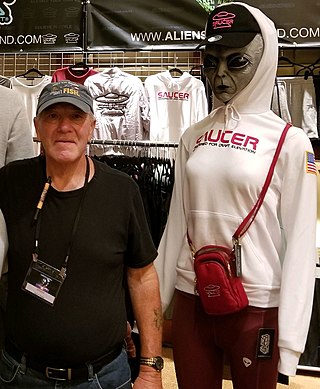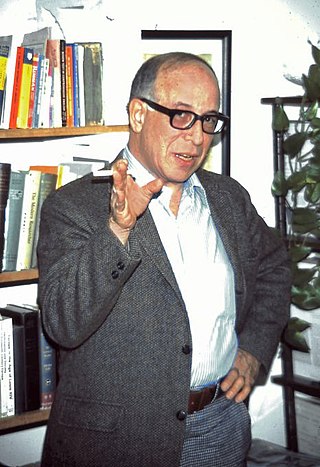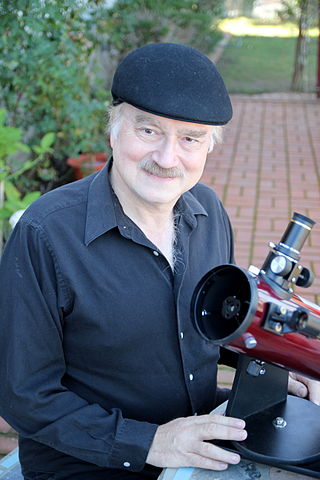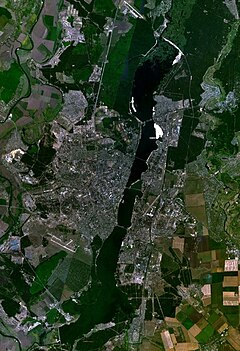
The Committee for Skeptical Inquiry (CSI), formerly known as the Committee for the Scientific Investigation of Claims of the Paranormal (CSICOP), is a program within the U.S. non-profit organization Center for Inquiry (CFI), which seeks to "promote scientific inquiry, critical investigation, and the use of reason in examining controversial and extraordinary claims." Paul Kurtz proposed the establishment of CSICOP in 1976 as an independent non-profit organization, to counter what he regarded as an uncritical acceptance of, and support for, paranormal claims by both the media and society in general. Its philosophical position is one of scientific skepticism. CSI's fellows have included notable scientists, Nobel laureates, philosophers, psychologists, educators, and authors. It is headquartered in Amherst, New York.
Paranormal events are purported phenomena described in popular culture, folk, and other non-scientific bodies of knowledge, whose existence within these contexts is described as being beyond the scope of normal scientific understanding. Notable paranormal beliefs include those that pertain to extrasensory perception, spiritualism and the pseudosciences of ghost hunting, cryptozoology, and ufology.
UFO conspiracy theories are a subset of conspiracy theories which argue that various governments and politicians globally, in particular the United States government, are suppressing evidence that unidentified flying objects are controlled by a non-human intelligence or built using alien technology. Such conspiracy theories usually argue that Earth governments are in communication or cooperation with extraterrestrial visitors despite public disclaimers, and further that some of these theories claim that the governments are explicitly allowing alien abduction.
Majestic 12, also known as Majic-12, and MJ-12 for short, is a purported organization that appears in UFO conspiracy theories. The organization is claimed to be the code name of an alleged secret committee of scientists, military leaders, and government officials, formed in 1947 by an executive order by U.S. President Harry S. Truman to facilitate recovery and investigation of alien spacecraft. The concept originated in a series of supposedly leaked secret government documents first circulated by ufologists in 1984. Upon examination, the Federal Bureau of Investigation (FBI) declared the documents to be "completely bogus", and many ufologists consider them to be an elaborate hoax. Majestic 12 remains popular among some UFO conspiracy theorists and the concept has appeared in popular culture including television, film and literature.

Scientific skepticism or rational skepticism, sometimes referred to as skeptical inquiry, is a position in which one questions the veracity of claims lacking empirical evidence. In practice, the term most commonly refers to the examination of claims and theories that appear to be beyond mainstream science, rather than the routine discussions and challenges among scientists. Scientific skepticism differs from philosophical skepticism, which questions humans' ability to claim any knowledge about the nature of the world and how they perceive it, and the similar but distinct methodological skepticism, which is a systematic process of being skeptical about the truth of one's beliefs.

The Roswell incident is a collection of events and myths surrounding the 1947 crash of a United States Army Air Forces balloon, near Roswell, New Mexico. Operated from the nearby Alamogordo Army Air Field and part of the top secret Project Mogul, the balloon's purpose was remote detection of Soviet nuclear tests. After metallic and rubber debris was recovered by Roswell Army Air Field personnel, the United States Army announced their possession of a "flying disc". This announcement made international headlines but was retracted within a day. Obscuring the true purpose and source of the crashed balloon, the Army subsequently stated that it was a conventional weather balloon.

The Kecksburg UFO incident occurred on December 9, 1965, at Kecksburg, Pennsylvania, United States, when a fireball was reported by citizens of six U.S. states and Canada over Detroit, Michigan, and Windsor, Ontario. Astronomers said it was likely to have been a meteor bolide burning up in the atmosphere and descending at a steep angle. NASA released a statement in 2005 reporting that experts had examined fragments from the area and determined they were from a Soviet satellite, but that records of their findings were lost in 1987. NASA responded to court orders and Freedom of Information Act requests to search for the records. The incident gained wide notoriety in popular culture and ufology, with speculation ranging from extraterrestrial craft to debris from the Soviet space probe Kosmos 96, and is often called "Pennsylvania's Roswell".

The Travis Walton incident was an alleged alien abduction of American forestry worker Travis Walton on November 5, 1975, while he was part of a logging crew in the Apache–Sitgreaves National Forests near Heber, Arizona.

The Pascagoula Abduction was an alleged UFO sighting and alien abduction in 1973, in which Charles Hickson and Calvin Parker claimed they were abducted by aliens while fishing near Pascagoula, Mississippi.

Philip Julian Klass was an American aviation journalist and UFO researcher, best known for his skepticism regarding UFOs. In the ufological and skeptical communities, Klass inspires polarized appraisals. He has been called the "Sherlock Holmes of UFOlogy". Klass demonstrated "the crusader's zeal for what seems 'right,' regardless of whether it brings popular acclaim," a trait he claimed his father instilled in him. "I've found," said Klass, "that roughly 97, 98 percent of the people who report seeing UFOs are fundamentally intelligent, honest people who have seen something—usually at night, in darkness—that is unfamiliar, that they cannot explain." The rest, he said, were frauds.

Jon-Erik Beckjord was an American paranormal investigator, photographer, and cryptozoologist interested in UFOs, crop circles, the Loch Ness Monster, and Bigfoot. Throughout his life, he owned three separate, small-scale museums that featured displays, mostly photographs, of alleged UFO, Nessie, and Bigfoot sightings. He made guest appearances on national radio and television shows, but was criticized by skeptics and fellow cryptozoologists alike for not providing substantive evidence to back up his claims of the existence of paranormal beings.

Joe Nickell is an American skeptic and investigator of the paranormal.
Tina Resch was a central figure in a series of incidents that came to be called the Columbus poltergeist case. In 1984, alleged telekinesis events at her Columbus, Ohio home drew significant news media interest. A series of color photographs taken by photojournalist Fred Shannon, and published by The Columbus Dispatch, were purported to show Resch sitting in an armchair with a telephone handset and phone cord flying in front of her. Resch's story, and Shannon's photography, were featured on a 1993 episode of Unsolved Mysteries.

Robert Sheaffer is an American freelance writer and UFO skeptic. He is a paranormal investigator of unidentified flying objects, having researched many sightings and written critiques of the hypothesis that UFOs are alien spacecraft. In addition to UFOs, his writings cover topics such as Christianity, academic feminism, the scientific theory of evolution, and creationism. He is the author of six books.
The following are some alleged sightings of unidentified flying objects in Russia:

The Gulf Breeze UFO incident was a series of claimed UFO sightings in Gulf Breeze, Florida, United States, during late 1987 and early 1988. Beginning in November 1987, the Gulf Breeze Sentinel newspaper published a number of photos supplied to them by local contractor Ed Walters that were claimed to show a UFO. UFOlogists such as Bruce Maccabee believed the photographs were genuine; however, others strongly suspected them to be a hoax.

The Society for Scientific Exploration (SSE) is a group committed to studying fringe science. The opinions of the organization in regard to what are the proper limits of scientific exploration are often at odds with those of mainstream science. Critics argue that the SSE is devoted to disreputable ideas far outside the scientific mainstream.
Alien abduction claimants are people who have claimed to have been abducted by aliens. The term "abduction phenomenon" describes claims of non-human creatures kidnapping individuals and temporarily removing them from familiar terrestrial surroundings. The abductors, usually interpreted as being extraterrestrial life forms, are said to subject experiencers to a forced medical examination that emphasizes the alleged experiencer's reproductive system.

Stanley Tiger Romanek is an American author.

Barry Karr is an American skeptic and paranormal researcher, currently the executive director of the Committee for Skeptical Inquiry. He has been consulted by the media on the paranormal. Karr has been involved in many investigations including faith healing, UFOs, firewalking, ghosts and others. He is a published author in two anthology publications, and as an editor of two others. Karr is a proponent of scientific skepticism and a Fellow of the Committee for Skeptical Inquiry.













